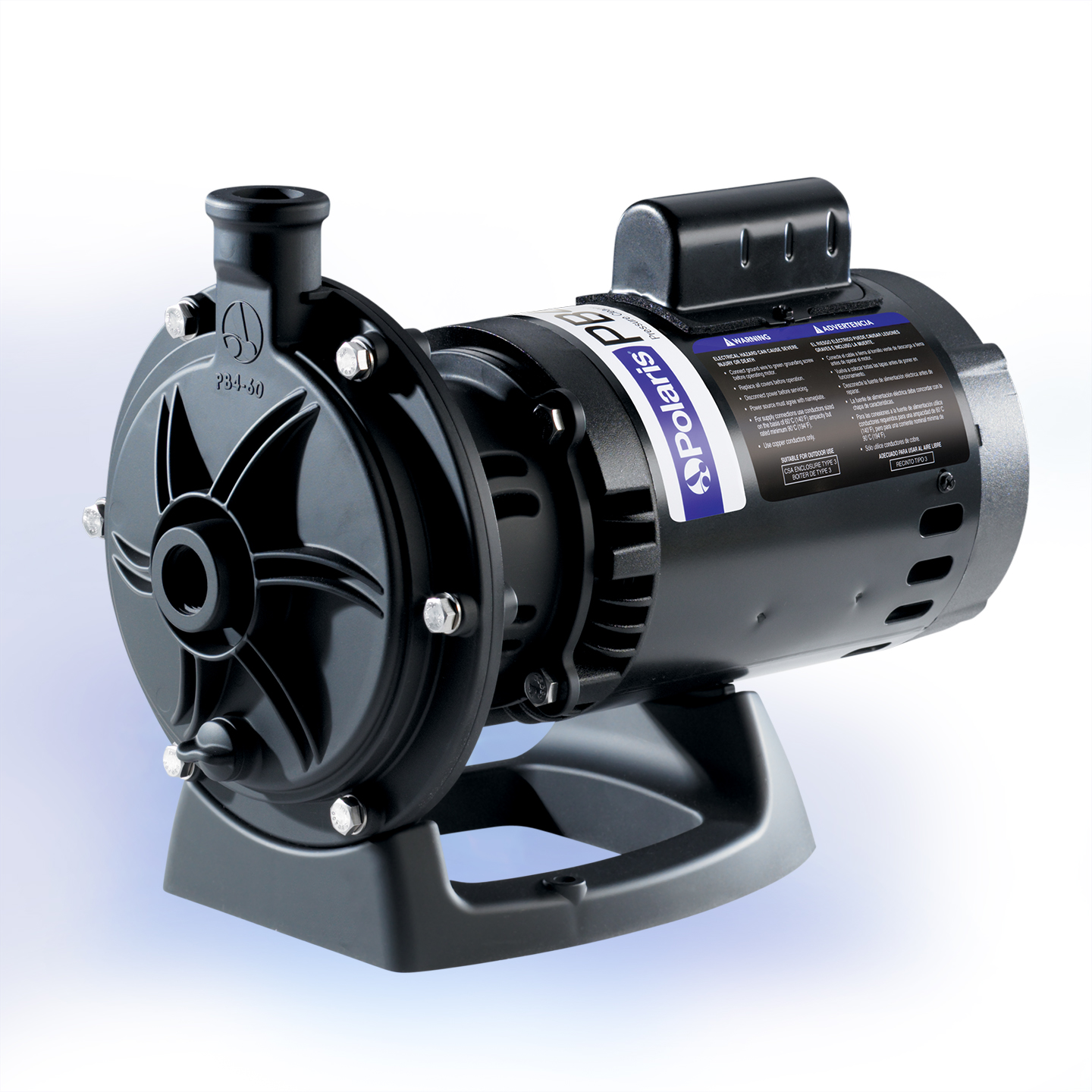Polaris PB4-60
Save Energy Without Sacrificing Performance
SKU #PB4-60
The PB4-60 booster pump delivers the best combination of high-performance power, quiet operation, and durability.
For best performance, always power your Polaris pool cleaner with a Polaris booster pump.
For more than 20 years, Polaris booster pumps have been the benchmark for powerful Polaris cleaner performance. Unlike other booster pumps, Polaris booster pumps are specifically designed to operate Polaris pressure-side pool cleaners at optimum power and cleaning efficiency.
Polaris PB4-60 Features
Polaris PB4-60 Frequently asked questions
Check the suction side piping union. While the pump is running, try to tighten the union. If this does not stop the air leak, turn off the pump. Loosen both unions and slide the pump out of the way. Remove, clean and re-install both union o-rings on the filtration pump.
Reposition the pump next to the piping and secure the union nuts to the pump. With clean union o-rings, hand-tightening of the unions should create a seal. If the unions still do not seal, gently tighten with a large pair of tongue-and-groove pliers. Do not over-tighten.
This is usually caused by air in the system. Check the pool or spa water level to ensure it is at the proper level and that air is not being drawn into the suction piping. If the water is at normal level, turn off the pump. Remove the lid and check for debris around the lid o-ring seat or improper installation of the lid seal, as either of these conditions will cause air to leak into the system. Clean the lid o-ring and place on the lid. Hand-tighten the lid to make an air tight seal. Do not use any tools to tighten the lid. Turn the pump back on.
- Verify that skimmer baskets, pump basket and other screens are clean. Clean as necessary.
- Check filter and clean as necessary.
- Check valve positions. Adjust as necessary.
- Check the cleaning system manually to ensure that the system is adjusted according to the manufacturer's recommendations.
NOTE: Multiple pieces of equipment operating at one time (for example, waterfalls, spa jets, and surface returns) may prevent the cleaning system from working properly.
Ensure that there is adequate room around the motor to circulate air and keep the motor cool. Have a qualified electrician check for loose connections and check the voltage at the pump motor while it is in operation. The voltage must be within 10% of the motor's data plate rating. If the voltage is not within 10%, contact a qualified electrician and/or the local power service provider.
This is caused by a damaged or failed mechanical seal. Replace the seal. See Section 6.2 of the owner's manual, "Service Technician Maintenance", 6.2.4 of the owner's manual, "Mechanical Seal Replacement".
It is possible that debris is caught in the pump impeller. The pump impeller moves the water, and the vanes in the impeller can become blocked with debris. See Section 6.2 of the owner's manual, "Service Technician Maintenance", 6.2.1 of the owner's manual, "Blocked Impeller", for more information.
The pump impeller is showing signs of normal wear. Have a qualified service technician check the impeller and replace as necessary.
If the pump is part of a relatively new installation, it could be an electrical problem. Contact a qualified service technician. Have the technician check for loose electrical connections and check the voltage at the pump motor while it is in operation. The voltage must be within 10% of the motor's data plate rating. If the voltage is not within 10%, contact a qualified electrician and/or the local power service provider.
Pump seal is leaking air. Have a qualified service technician replace the seal.

